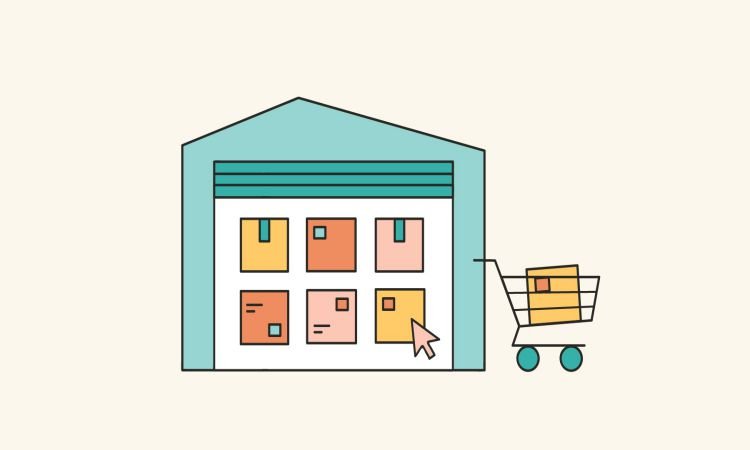 Dropshipping is a business model that has been gaining traction over the past few years as eCommerce has exploded. Instead of holding and managing inventory as a retailer- whether online or brick & mortar – you fulfill orders as they come in by sending the order directly to your supplier who then ships it out for you. This means that instead of having an inventory sitting on your shelf or in your warehouse, there’s just one transaction between you and the customer with no need to keep any stock waiting around. 3pl logistics is a Third-Party Logistics Services provider and aims to provide you with the best services.
Dropshipping is a business model that has been gaining traction over the past few years as eCommerce has exploded. Instead of holding and managing inventory as a retailer- whether online or brick & mortar – you fulfill orders as they come in by sending the order directly to your supplier who then ships it out for you. This means that instead of having an inventory sitting on your shelf or in your warehouse, there’s just one transaction between you and the customer with no need to keep any stock waiting around. 3pl logistics is a Third-Party Logistics Services provider and aims to provide you with the best services.
Dropshipping is also known as “dealing” or “wholesale buying”. When I refer to drop shipping in this article, I’m talking about drop shipping as a business model.
In this guide, we’re going to cover what drop shipping is and how you can start doing it, as well as the pros & cons of running a business that way. We’ll go over where to find suppliers and how to negotiate with them so they offer the best deal for you. And finally, we’ll look at some pitfalls of drop shipping so you don’t accidentally fall into them.
For those curious on the numbers side of things before jumping in head-first:
In 2016 alone there were an estimated 442 million products offered via drop shipping, and those retailers made $6.6 billion in revenue.
$890 million of the $1.2 billion spent online on Thanksgiving day comes from drop shippers, which means they account for more than 1/3rd of all online sales on that day!
The first thing we need to do is to look at how it works:
What Is Drop Shipping?
It’s an eCommerce retailer’s dream: You get paid upfront for your product without having to worry about paying anything else like stock storage fees or even postage to send out packages. This has huge benefits as you can offer lower prices since you don’t have fulfillment costs eating into the markup, and there are no minimum order requirements or quotas to worry about.
This makes it very easy to start an eCommerce store – you just need a platform like Shopify or WooCommerce, and you can have your own online shop where people can buy your products right away.
It works in the opposite way in comparison with the traditional retail model: Find a supplier that has what you want to sell, put in an order when they have it ready for you, then ship it out when someone buys from your store. When you’re sourcing your supplier this is something that’s very important – they have to have good relationships with their suppliers so they are able to quickly get stuck. They will also need systems in place like backup suppliers (just in case) and flexible fulfillment options to be able to stay competitive.
There are a few reasons why this method has become so popular:
No upfront inventory costs – You don’t need to pay anything upfront for your stock! So you can begin selling right away without having to wait for investors or loans.
Every supplier will have its own minimum order requirement, but most suppliers will not require any orders to be made at all. You can just get them when someone orders from your store, which cuts down on leftover inventory because everything is sold as it’s ordered. This also massively reduces the risk of buying too much stock and ending up with excess sitting in storage somewhere – so no more unsellable overstock or wasted ad space on your website. Flexible fulfillment options – When you’re selling via drop shipping you don’t actually fulfill the order yourself (i.e. send the product out) as every other eCommerce retailer does. The “fulfillment” part is handled by the supplier of the products, and there are several different options that you can choose from depending on the situation: Dropshipping – This is where the supplier ships out the order directly to your customer. You never handle any of the products and don’t need to keep stock in a warehouse (you only deal with orders). If someone wants multiple products, like a shirt & tie, then they will be shipped together but separately (which means you need to make sure you have enough space for both items in one delivery box). Dropshipping works well with office supply stores because most items are lightweight. Warehousing – This is where the supplier keeps all of their inventory at their warehouse and simply prints off an invoice with your customer’s address when you place an.
When your customer receives their package, they might notice a “shipping error” on the invoice and call you up to make sure it’s corrected before they pay. The supplier will generally ship out all your orders in bulk every few days, so you’ll need a warehouse suitable for storing the items until then. Wholesaling – This is where the supplier keeps all of their inventory at their warehouse and you pick it up yourself when needed. You’ll need to store your stock somewhere, so if you’re only ordering a small amount every few days then the supplier might be able to work with your budget.




